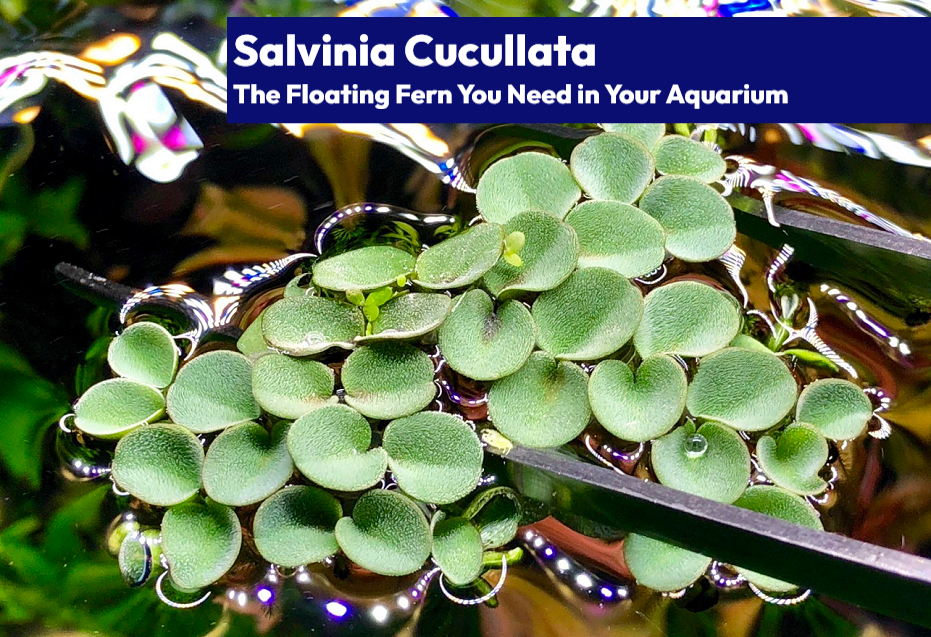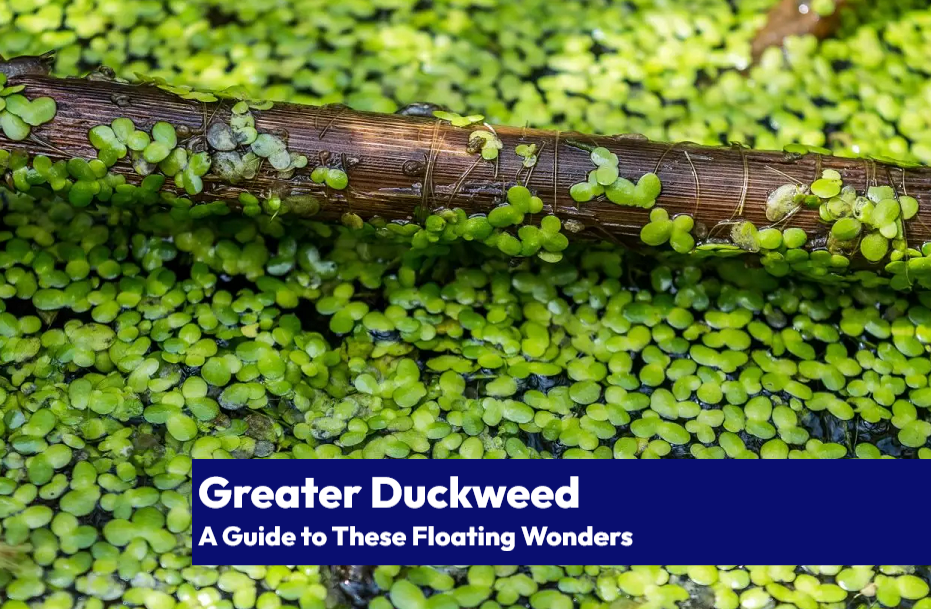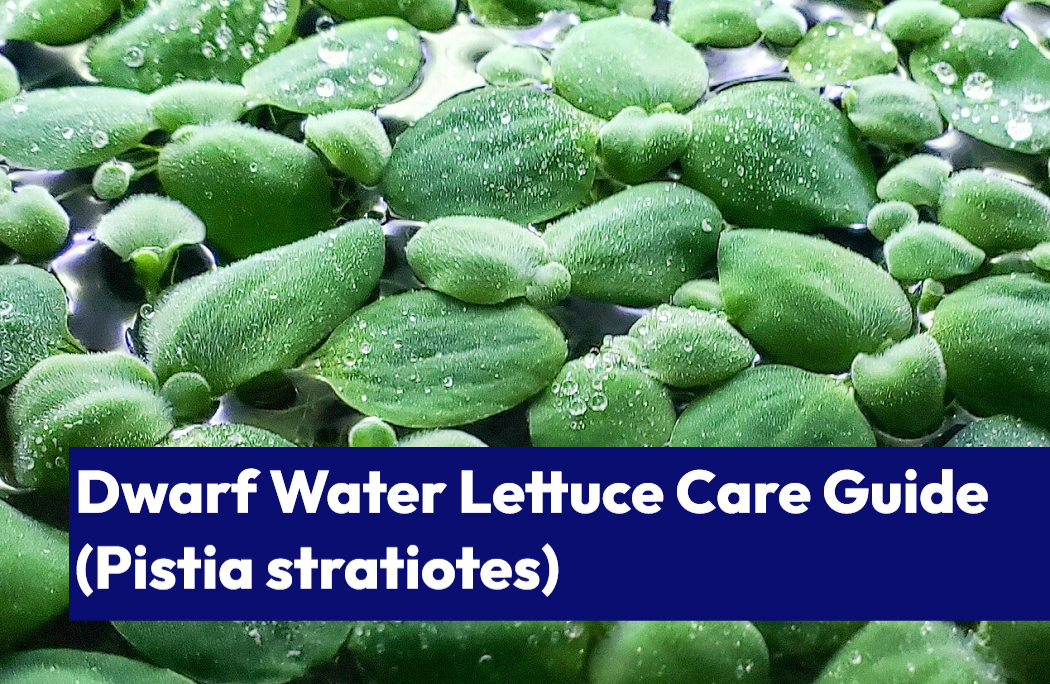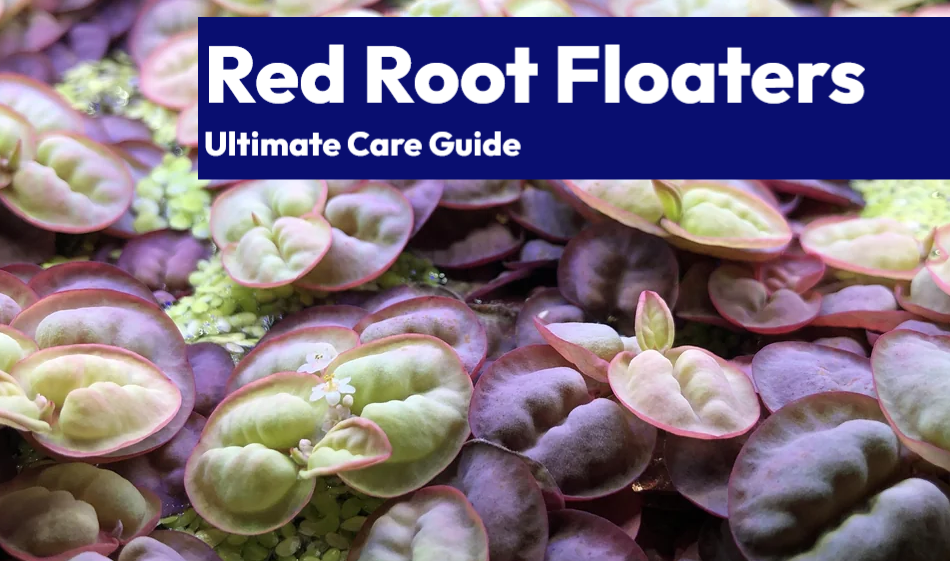Are you looking for a way to improve the health and happiness of your aquatic pets? Look no further than floating plants! These beautiful and beneficial plants not only add a touch of elegance to your tank or pond, but they also play a crucial role in maintaining a healthy environment.
If you’re an aquarium enthusiast, you know the importance of having a healthy and balanced ecosystem in your tank. These little guys may not be rooted in the substrate, but they are the unsung heroes of the aquarium world. So, buckle up, folks, because in this article, we’re diving deep into the exciting world of floater plants!
Why You Should Add Floating Plants
First things first, why should you even consider adding floating plants to your tank? Well, for starters, they provide essential shade and cover for your fish and other aquatic creatures. This can help reduce stress levels and create a more natural environment for your pets to thrive in. Floating plants also play a crucial role in regulating the water quality of your tank by reducing the amount of nitrates and other harmful chemicals.
But that’s not all! Floating plants also serve as a natural food source for your fish and other aquatic life. Some species of fish, such as tetras and guppies, love to nibble on the leaves and stems of floating plants. And if you’re keeping shrimp in your tank, they’ll love to munch on the roots of floating plants as well.
The Best Aquarium Floater Plants
Now, let’s talk about all the different types of floater plants that you can add to your aquarium!
Red root floater (Phyllanthus fluitans)

Get ready to add some flair to your tank with the Phyllanthus Fluitans, also known as the Red Root Floater! This freshwater floating fern plant is a must-have for any aquascaping enthusiast. With its unique look, deep red roots, and easy care, it’s no wonder why it’s highly sought after. The Red Root Floater’s leaves are a bit larger than green Salvinia floaters and can turn a stunning deep red color.
Growing these floaters is a breeze and they can be found in tropical, stagnant water habitats such as canals and rivers in South America. They are perfect for open low-tech aquariums and paludariums with gentle water flow. Red Root Floaters can grow to cover the entire surface of water in your tank, blocking light from below and preventing unwanted algae growth. They will also help remove biological waste and other contaminants from your tank water.
Just be careful, as they might take over the entire surface of your tank if left alone for too long. Simply remove the floaters as they spread to keep your desired look. The light green leaves will turn a deep red when kept under high light, and the dark red roots are much more attractive-looking than many other floaters. Red Root Floaters may even grow delicate white flowers in the right conditions. Add some to your planted tank and watch them glow in contrast!
Amazon Frogbit (Limnobium laevigatum)

Amazon Frogbit, also known as Limnobium laevigatum, is a floating aquatic plant that’s popular among aquarium hobbyists. Native to Central and South America, it’s now found in many American states, including California, due to human activity in the aquarium trade. With its ornamental nature and ease of care, it’s a great plant for both beginner and experienced aquarists.
Amazon Frogbit is known for its thick, spatula-shaped leaves with spongy undersides, which give it the nickname South American sponge plant. When young, the plant has flat leaves that float on the water’s surface, but as it matures, the leaves rise above the water and it starts flowering with small white flowers. In a home aquarium, the plant can grow quickly, spreading its leaves across the surface, which can lead to oxygen depletion and prevent other plants from getting sufficient sunlight if not regularly thinned.
Dwarf Water Lettuce (Pistia stratiotes)

Dwarf water lettuce (Pistia stratiotes) is a plant that loves to live in tropical and subtropical climates. It got its nickname, the “Nile Plant,” because it was first discovered along the Nile River, but it’s now found all over the world! This smaller variety of water lettuce is perfect for aquariums and ponds and is a favorite among aquarists looking to add some life to their habitat.
With Dwarf water lettuce in your aquarium, you’ll be amazed at the benefits you’ll see. This floating plant provides shelter and cover from heat and light, and its roots extend deep into the water, creating a beautiful curtain of tendrils for fish and other creatures to move through. The plant will also improve the overall water quality by absorbing harmful toxins like ammonia and nitrates, and by depriving algae of the nutrients it needs to grow. With the help of Dwarf water lettuce, you’ll have a cleaner and healthier tank that’s less prone to algae buildup.
Water Spangles (Salvinia minima)

Meet Salvinia Minima, the floating fern that will have you swimming in excitement! This aquatic species is native to South America, Mesoamerica, and the West Indies and was introduced to the United States in the 1920s-1930s. But watch out, it’s considered an invasive species and can be harmful to local ecosystems.
Salvinia Minima is small and oval-leaved, ranging from 0.4 to 2 centimeters (0.16 to 0.79 inches) in length. Each fern rhizome floats near the surface and has joined leaves that branch off horizontally. The leaves grow in sets of three, with two floating on top and one dissected leaf hanging down, acting as root-like structures. The fern’s leaves are covered in fine white hairs that repel water and brown hairs on the underside. The leaves can range from bright green to brown, often browning with age and in sunlight.
This fern undergoes three stages of growth, starting with a single bud in the primary stage, then curling upward in the secondary stage, and finally appearing as dense mats in the tertiary stage. Reproduction occurs asexually through fragmentation, and any part of the rhizome that buds or breaks off can form another daughter plant. This leads to exponential growth and the potential for dense mats to form.
Floating fern (Salvinia natans)

Get ready to float your boat with Salvinia Natans! These floating ferns, also known as Floating Watermoss and Water Butterfly Wings, are a must-have for anyone looking to add some excitement to their pond. Not only do they provide shade and shelter for small fish, but they also act as a natural filter, reducing the spread of algae.
Salvinia Natans are easy to identify with their light green fronds and horizontal pinnate leaves that reach about half an inch in length. The base of the plant has two larger leaves, about an inch in diameter, that keep the fern afloat. These leaves have a unique layer of skin called cuticular papillae, which protects the plant from rotting and allows it to continue photosynthesis even when wet.
Floating ferns are a rare breed that can tolerate direct sunlight, making them a popular choice for outdoor ponds. Their root structure is also a standout feature, with a single leaf pointing down into the water instead of long roots. You may also see some root-like strings of green hanging down alongside the leaves, making them perfect for narrow depth enclosures. So, if you’re looking to add some flair to your tank, grab some Salvinia Natans today!
See Salvinia Natans on BucePlant.com
Asian watermoss (Salvinia cucullata)

Meet the Asian watermoss, Salvinia cucullata! This floating fern species hails from tropical Asia and is a real showstopper in sunny, still waters. It’s not commonly available in the trade, but trust us, it’s worth the hunt! With its hood-like, rolled up leaves, side branches, and comb-like appearance, it adds a unique touch to any aquarium.
This plant is not only aesthetically pleasing, but it’s also a hard worker. It can thrive under suboptimal conditions, with its flat leaves and velvety look. Just make sure to give it plenty of light, warm temperatures, and nutrient-rich water for optimal growth. It may not grow as fast as other Salvinia species, but that’s what makes it even more special. This plant is perfect for open aquariums and well-lit paludariums and ripariums. It also provides a natural habitat for juvenile fish and other aquatic creatures. So, why not add a little Asian charm to your aquarium with Salvinia cucullata?
Fairy Moss (Azolla caroliniana)

Azolla caroliniana, also known as Fairy Moss, is a floating fern native to North America. It’s a tiny fern that forms a mat of branched stems covered with bilobed scale-like leaves, which float on the surface of the water. The foliage turns bright red in response to stress, such as bright light or high/low temperatures. Carolina Mosquitofern grows quickly and can sometimes become a nuisance, as it can form thick mats that cover the surface of the water and prevent mosquitoes from laying their eggs.
This species has a unique ability to fix atmospheric nitrogen into a usable form, thanks to its symbiosis with the cyanobacterium, Anabaena azollae. This makes Carolina Mosquitofern an excellent biofertilizer, as nitrogen is one of the three vital macronutrients required for plant health. In addition to being used for its practical purposes, Carolina Mosquitofern is also cultivated as an ornamental plant for use in water gardens, aquaria, and ponds. It performs best in full sun to part shade, and spreads indefinitely.
Pacific Mosquitofern (Azolla filiculoides)

Azolla filiculoides, also known as mosquito fern, is a free-floating, aquatic fern that adds an attractive touch to water gardens and ponds. This deciduous perennial forms rapidly expanding mats of bright green foliage (to 1/2 inch tall) that can become so dense as to reportedly prevent mosquito larva from hatching. The foliage takes on purplish-rose tints in full sun, and all plants turn reddish-purple in fall as temperatures cool. The plant is native to lakes, ponds, streams, and rivers in North and South America, and its pinnately branched stems are densely clad with tiny, two-lobed leaves in two rows.
If you’re thinking of adding mosquito fern to your aquarium or water garden, be sure to scatter small bunches of plants on the water surface. It spreads quickly in optimum conditions, and can even discourage algae growth and help keep waters clear. Just be careful not to let it spread too much, as you may need to net out excess plants. Just remember, the plants will easily die if they become too dry!
Giant Duckweed (Spirodela polyrhiza)

Giant duckweed, also known as Spirodela polyrhiza, is the largest of all duckweeds and is commonly found in wetlands like rivers, ponds, lakes, and sloughs.. This tiny plant packs a punch, with two to three rounded leaves that are usually connected and up to nine roots hanging beneath each leaf! The underleaf surface is a dark red, making it easily distinguishable from the exotic plant, Landoltia punctata.
But don’t let its small size fool you, Spirodela polyrhiza is a real powerhouse. This aquatic plant grows in dense colonies and forms a mat on the water surface, with each plant measuring 0.5 to 1.0 cm wide. The top part of the plant dies in the fall and the plant overwinters as a turion in ponds, sinking to the bottom of the water body and going dormant until the water temperature reaches 15 °C.
Duckweed (Lemna minor)

Duckweed, also known as water lentils or water lenses, is a type of flowering aquatic plant that floats on or just beneath the surface of still or slow-moving bodies of water. It’s characterized by its simple structure, which is a small “thallus” or “frond” that is a few cells thick and often has air pockets to allow it to float. Depending on the species, duckweed may have no root or may have one or more simple rootlets.
If you’re looking for a low-maintenance, hardy, and easy-to-grow plant for your aquarium, duckweed is the perfect choice! This tiny plant is scientifically known as Lemna Minor and adds a touch of green to your tank. Each plant produces tiny, oval leaves that measure only 0.12 inches (3mm) and are light green in color, giving your tank a clover-like appearance. The leaves also have root-like structures that hang down underneath, making this plant even more charming. So, why not add some duckweed to your aquarium today and enjoy the benefits it brings!
Final Thoughts
We hope this article has inspired you to add some floaters to your tank and float towards a happier aquatic ecosystem. From improving water quality to providing shelter for your aquatic pets, the benefits of floating plants are endless. So, what are you waiting for? Get out there and start floating towards a better aquatic life!

Tim Priest, a renowned aquarium expert with over 15 years of experience in aquatic gardening and fish education, is dedicated to helping enthusiasts create stunning and thriving aquatic environments. As the founder of LearnTheAquarium.com, Tim shares his wealth of knowledge, passion, and expertise through engaging articles, educational resources, and personalized advice.
Discover the secrets to creating captivating underwater landscapes and maintaining healthy aquatic ecosystems. Join Tim on an exciting journey and let your aquarium adventure begin!





